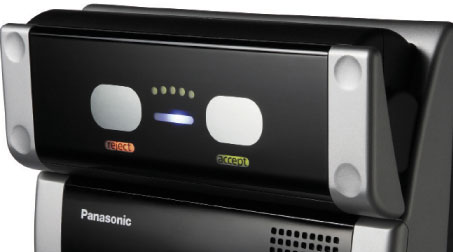Recently installed at Manchester Airport, the Iris Reader relies on the complex and intricate patterns in the iris, which are unique to each passenger. On registration, the Iris Reader captures a detailed close-up of the passenger’s iris, storing a ‘template’ of the passenger’s iris pattern into the system. At the checkpoint, or at a designated access point, the passenger looks into the Iris Reader, which then compares the patterns in the individual’s iris against the templates stored in the system and if there’s a match, the passenger’s identity is verified and they are allowed to pass security.
The IND (Immigration and Nationality Directorate) Review’s initial target of 60,000 enrolments by April 2007 was easily exceeded. According to the UK Border and Immigration Agency, there had been 115,773 enrolments and 526,992 crossings, as of August last year.
“People often think that passengers have to participate, but they don’t, as it is entirely voluntary. Enrolment takes a short 10 minutes and is free in the UK,” said Sean Taylor, biometrics spokesperson, Panasonic System Solutions Europe.
The Iris Reader is compliant with worldwide standards and has been installed at London Heathrow Terminals 1, 2, 3 and 4, Gatwick North and South Terminals, Manchester Airport Terminals 1 and 2 and Birmingham International Airport, plus two Iris Readers are due for installation at Heathrow Terminal 5.

The BM-ET200 Iris Reader relies on the unique, intricate patterns of each passenger’s eye. On registration, the Iris Reader captures a detailed close-up of the passenger’s iris, storing a ‘template’ of the iris pattern into the system, for future reference.
Iris Reader: false acceptance ratio of 0.001% to 0.0001%
ID cards, keys, passwords and fingerprints are among the security technologies that are currently used at airports. In comparison with these conventional methods, the Iris Reader system is potentially less costly to administer and operate, and can easily accommodate larger numbers of personnel as the passenger throughput increases. Most crucially, however, the precise Iris Reader is near impossible to counterfeit with a false acceptance ratio of 0.001% to 0.0001%. This means that it’s 3,000% more accurate than voice prints, 100-1,000 times more accurate than spot fingering and 1,000 to 10,000 times more accurate than hand print verification.
Taylor said: “Despite the effectiveness of the Iris Reader, you can never have only one security technology. It is essential that the Iris Reader is integrated into the whole security and checkpoint process alongside the other security checks, from the bag scanners to the ticket checks by airline staff at the aircraft door, to ensure ultimate security.”
The Iris Reader is virtually instantaneous and verifies passenger identities without contact, which eliminates wear and contamination issues and increases its durability so that it has high rates of MTBF (mean time between failures). To ease passenger flow, the Iris Reader automatically verifies passenger identities without the need for a staff member and to further guard against theft or misuse of the data; the verified data is secured by 3DES encryption.
Counteracting application weaknesses
According to Taylor, the Iris Reader itself is in no way flawed, but the application could potentially be a weakness if it is not installed to a high standard. Taylor said: “It is crucial to make the Iris Reader intuitive, so that passengers naturally know how to interact and use it. It is equally important that the overall system design does not hinder the Iris Reader. This needs to be done to a very high standard otherwise the whole process, not the Iris Reader technology itself, may not be as effective as it could be. Over the next five years, we would like to enable more passenger leeway so that the Iris Reader can operate even if the passenger isn’t looking in exactly the right place.”
In response to queries raised over the health hazards potentially caused by the Iris Reader, Taylor said: “The Iris Reader is simply a photograph of the eyes; it is no different to taking a photo and causes absolutely no damage whatsoever to the passengers.”







